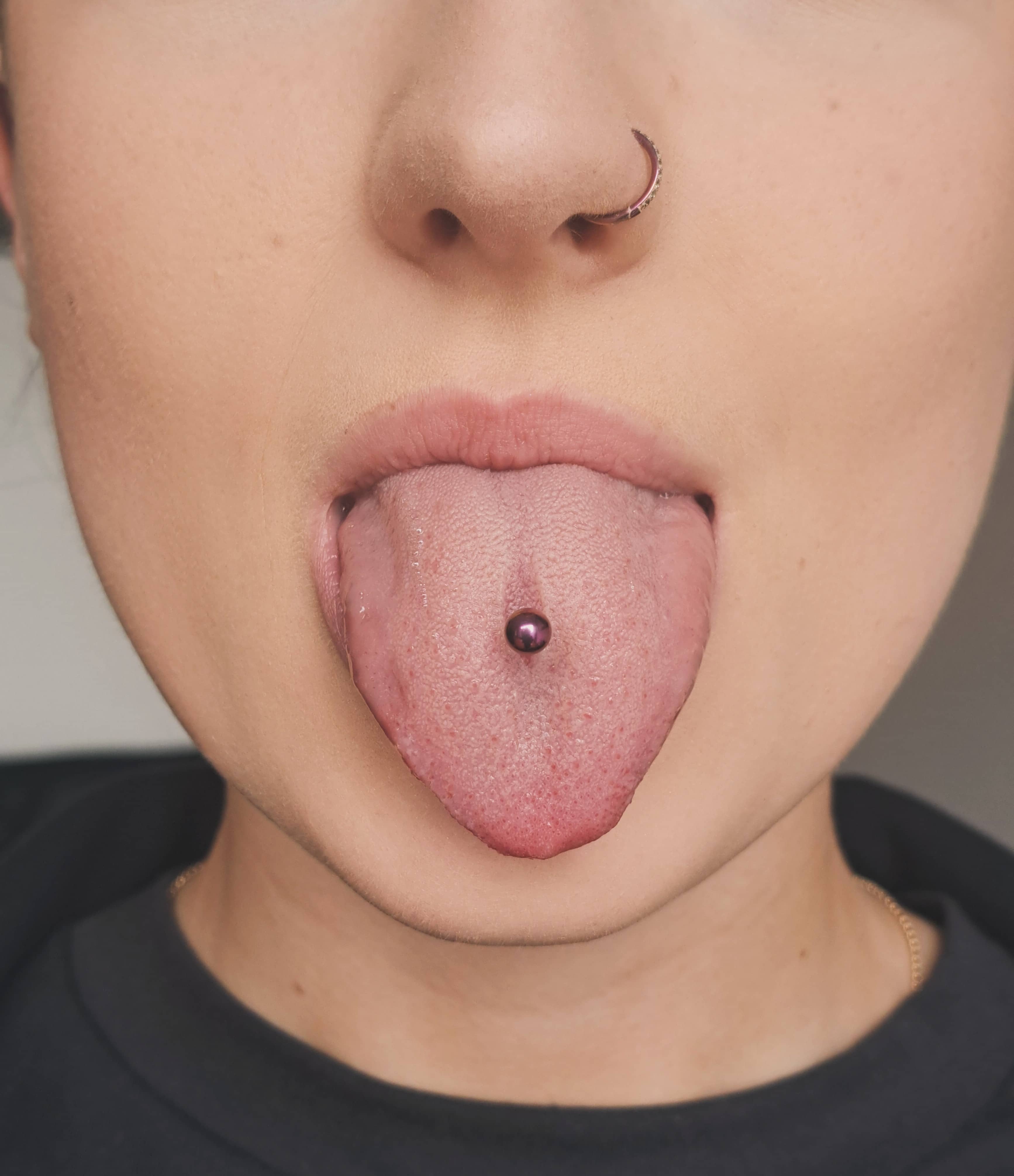19.08.2024
The term “piercing” comes from the English verb “pierce”, which means “to pierce”. The tradition of decorating with piercings stretches far throughout history. Oral and perioral piercing includes the insertion of jewelry through the tongue, lip, cheek, frenulum, uvula and other parts of the mucous membrane of the oral cavity.
Understanding the impact of oral piercings on oral health is extremely important because inadequate placement and/or care can result in various complications and infections.
A piercing creates an opening in the skin or mucous membrane that is susceptible to bacterial infection. In the mouth, where there are many microorganisms, the risk of infection is higher, especially if oral hygiene is reduced. Symptoms may include swelling, pain, redness and purulent discharge.
Also, constant contact between oral jewelry and gingiva can lead to receding gingiva, which causes hypersensitivity of tooth necks and over time increases the risk of periodontal disease and tooth loss.

A very common complication is tooth damage due to biting the oral piercing. The constant contact of jewelry with teeth can eventually lead to abrasive and erosive changes in the enamel and increase the risk of caries. Metal jewelry can also cause tooth fractures, especially if a person accidentally bites the piercing.
The largest number of complications is associated with a tongue piercing, since it is extremely blood-filled and innervated. Improper piercing can damage the nerve endings in the tongue, which can result in numbness, loss of taste, or difficulty moving the tongue. Since the tongue is well supplied with blood, increased bleeding and swelling may occur after the procedure, and in more severe cases, airway obstruction. In order to prevent serious complications, adequate hygiene of the oral cavity and piercings is necessary.
In a certain percentage of patients, increased saliva production was also recorded as a reaction to the presence of oral jewelry. This can be uncomfortable and can contribute to bad breath.
Furthermore, an oral piercing can interfere with normal speech patterns, causing a hoarse voice or difficulty pronouncing certain sounds. Loose oral jewelry is a choking hazard, especially during sleep or physical activity, and swallowing or inhaling jewelry can lead to serious medical emergencies.
It is important to note that some people may be allergic to certain metals used in oral jewelry, which may result in allergic reactions such as swelling, itching or rashes. Oral piercings must be removed during dental procedures as they may interfere with access and increase the risk of injury.
Improper piercing techniques or infection can lead to scarring or keloid formation, especially in sensitive individuals.
It is important to consider the listed possible complications before deciding to have an oral piercing and to maintain good oral hygiene to reduce the risk of complications. Regular dental checkups are key to monitoring the oral health of piercing patients.
